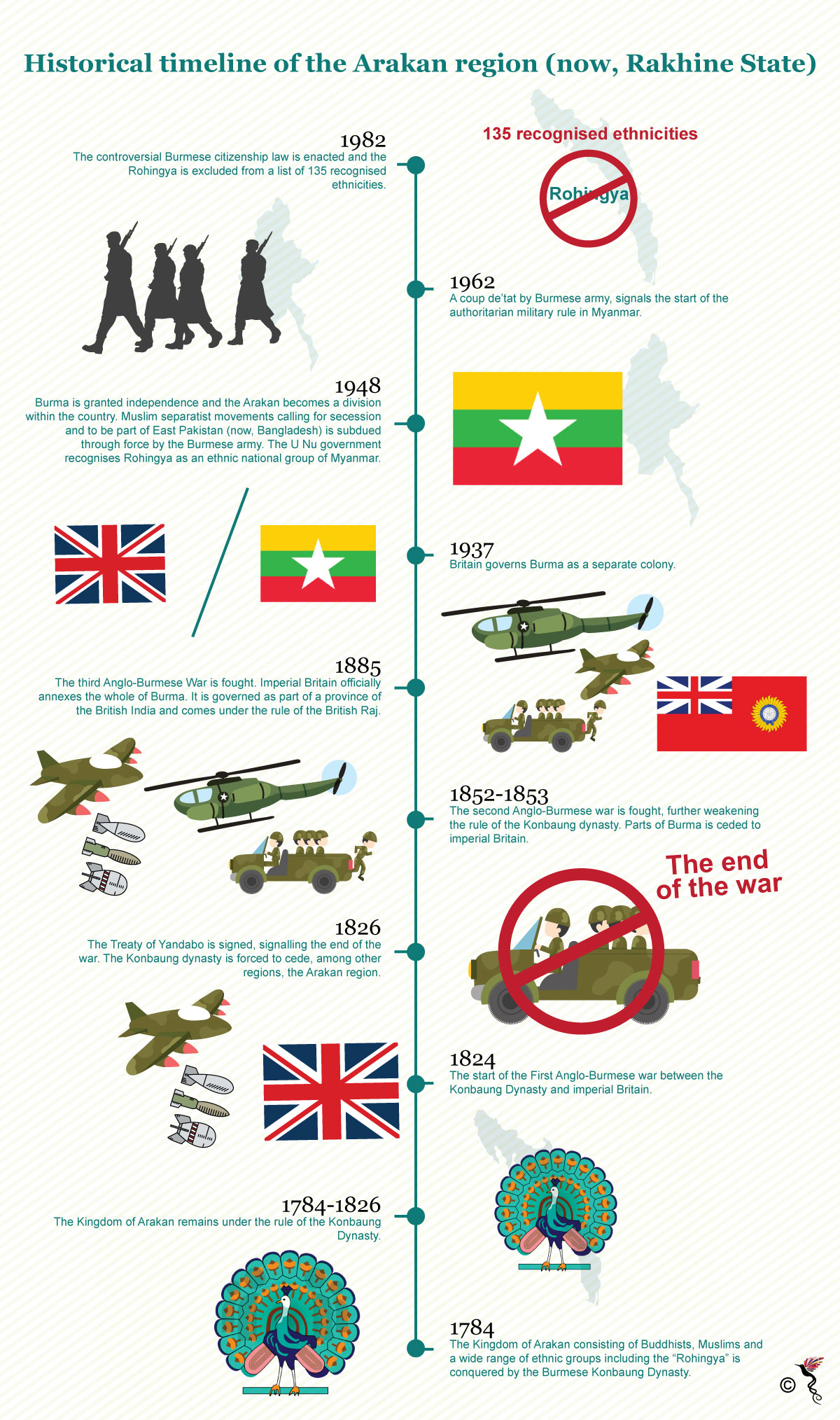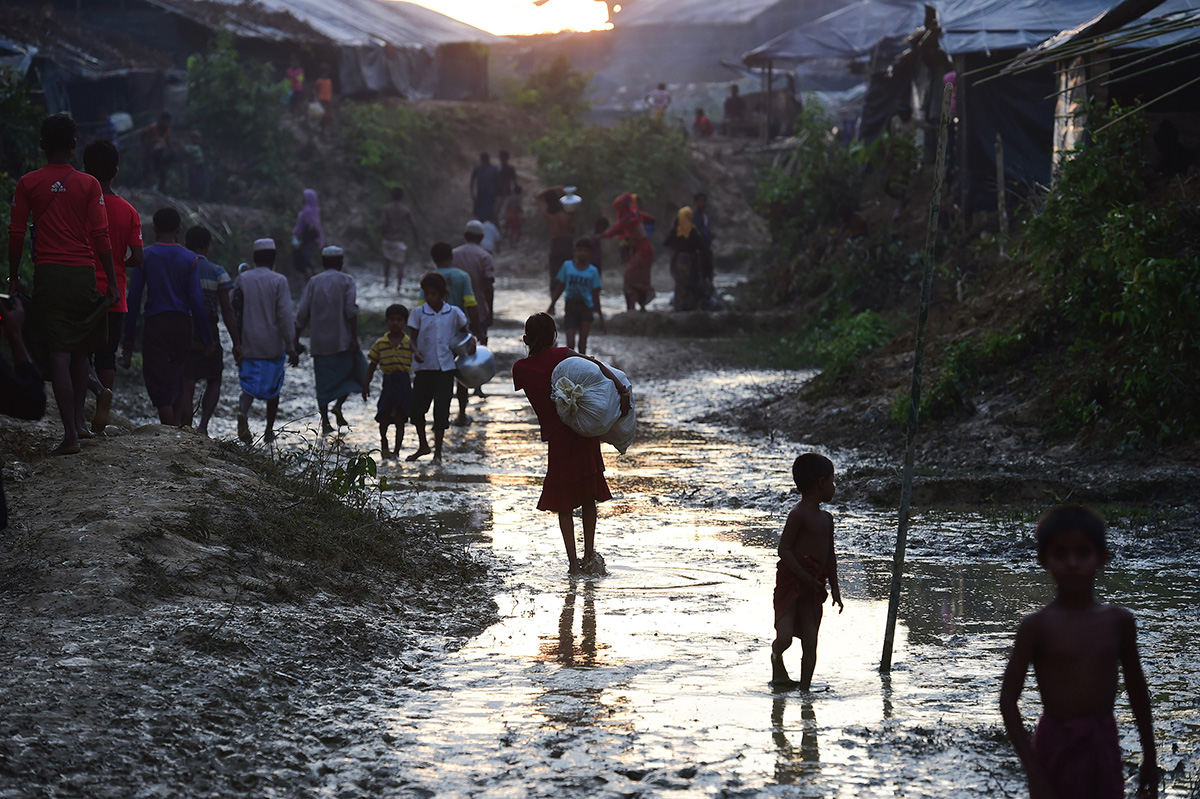The problem with using historical narratives to justify actions is that it is often difficult to establish an agreed upon timeframe and narrative from which one’s arguments can be advanced.
Such is the case with the “Rohingya” or “Bengali” migrants – depending on who one talks to – whom according to the UN (United Nations), are the most prosecuted minority group in the world with the ongoing crisis in the Rakhine State of Myanmar.
Historically, the Kingdom of Arakan – modern day Rakhine State – and its capital, Mrauk U was a thriving port city made up of Buddhists, Muslims and a wide range of ethnic groups including the “Rohingya”. It controlled the area which is now known as the Rakhine State. In 1784, the kingdom was conquered by the Burmese Konbaung Dynasty until the Burmese ceded Arakan, among other territories to the British in 1826 following their loss in the first Anglo-Burmese War.
This is a crucial point in history because under British governance from 1826 till 1937, there was no law prohibiting the Bengali migration to Rakhine. Especially so since 1885, Imperial Britain had annexed the whole of Burma and governed it as part of a province of British India. Hence, the migration of Bengalis to Rakhine would constitute to domestic movement instead of a cross-border one.
Many had taken refuge in nearby Chittagong in present-day Bangladesh and sought to return after the war. American Baptist missionary, Reverend Comstock who stayed in Rakhine from 1834-1844, recorded that, within a short span of time, many Bengali Muslims had migrated to Rakhine from Chittagong due to higher wages and better living standards.
Census data to shed light on the number of Bengalis moving to Rakhine State is scarce and vague. Reliable sources point to the Akkyab district in the Arakan region which is said to have been home to a majority Muslim population. According to the Akkyab Gazette census data in 1912, out of 529,943 people in the district, close to 35 percent were Bengali speakers and more than 30 percent were Muslims of various denominations.
In 1948, Burma was granted independence, with Arakan being part of the newly inaugurated nation. There were calls for secession from some Muslim groups within Arakan but these were mostly quelled by the Burmese army and under the U Nu government, when the ethnic minority was recognised as a national group.
Following the coup in 1962, subsequent authoritarian rule in Myanmar saw the Rakhine Muslims being continually disenfranchised, culminating in the 1982 Citizenship Act which did not include the Rohingya as part of the list of 135 recognised ethnicities. As a result, they were deemed stateless.

Timeline of the history of the Arakan Region in the present day Rakhine State of Myanmar.
The 1982 law was based on the principle of jus sanguinis which is Latin for “right of blood”. According to the Burmese Law Commission at the time, a racial group would only be recognised if they settled in Burma prior to the British rule. Even to become a naturalised citizen, one must prove that they had family previously residing in Myanmar before independence.
Following this logic, the actions of the Burmese and currently the Myanmar government is justifiable because in their eyes, this group of Rakhine Muslims are in fact Bengali migrants from parts of the British India (now India) and Chittagong (now Bangladesh) who moved to Arakan and now need to rightfully return to where they came from. This also explains why government officials often refer to Rakhine Muslims as “Bengali Muslims” and not “Rohingya” as it would point to them having some form of historic origin in Myanmar.
In essence, the government of Myanmar has shifted the goalposts by selecting the period prior to British rule as a point in history that marks what would constitute a pure Burmese racial group. The Rohingya can argue that their historical lineage can be traced back further still but herein lies the monumental task of tracing back one’s ancestry given the lack of proper documentation.
Many also pointed to the acceptance of Rohingya as an ethnic group prior to the 1962 coup as evidence that they should be granted citizenship. However, deep scented animosity since the 1920s against the influx of these “Chittagonian Muslims” have always been a source of communal tensions with the Rakhine Buddhists who have had strong nationalist anti-Muslim sentiments. This could have contributed to the prevailing resentment against the Rakhine Muslims we see today.
Because history is an ongoing, multifaceted process, it is difficult to establish a mutually agreed upon timeframe and narrative that everyone can use to determine and justify a particular set of actions. We see the same thing happening in regards to the South China Sea dispute and the controversial 1947 nine-dash-line map used by Beijing to stake a claim on islands within the region.
In the case of the Rohingya – or Bengalis – or Rakhine Muslims, it has become clearer that differing historical narratives will only make the waters of resolution murkier which invites a tendentious suggestion. Should we abandon the unfeasible quest for “correct history” in favour of humanity?
